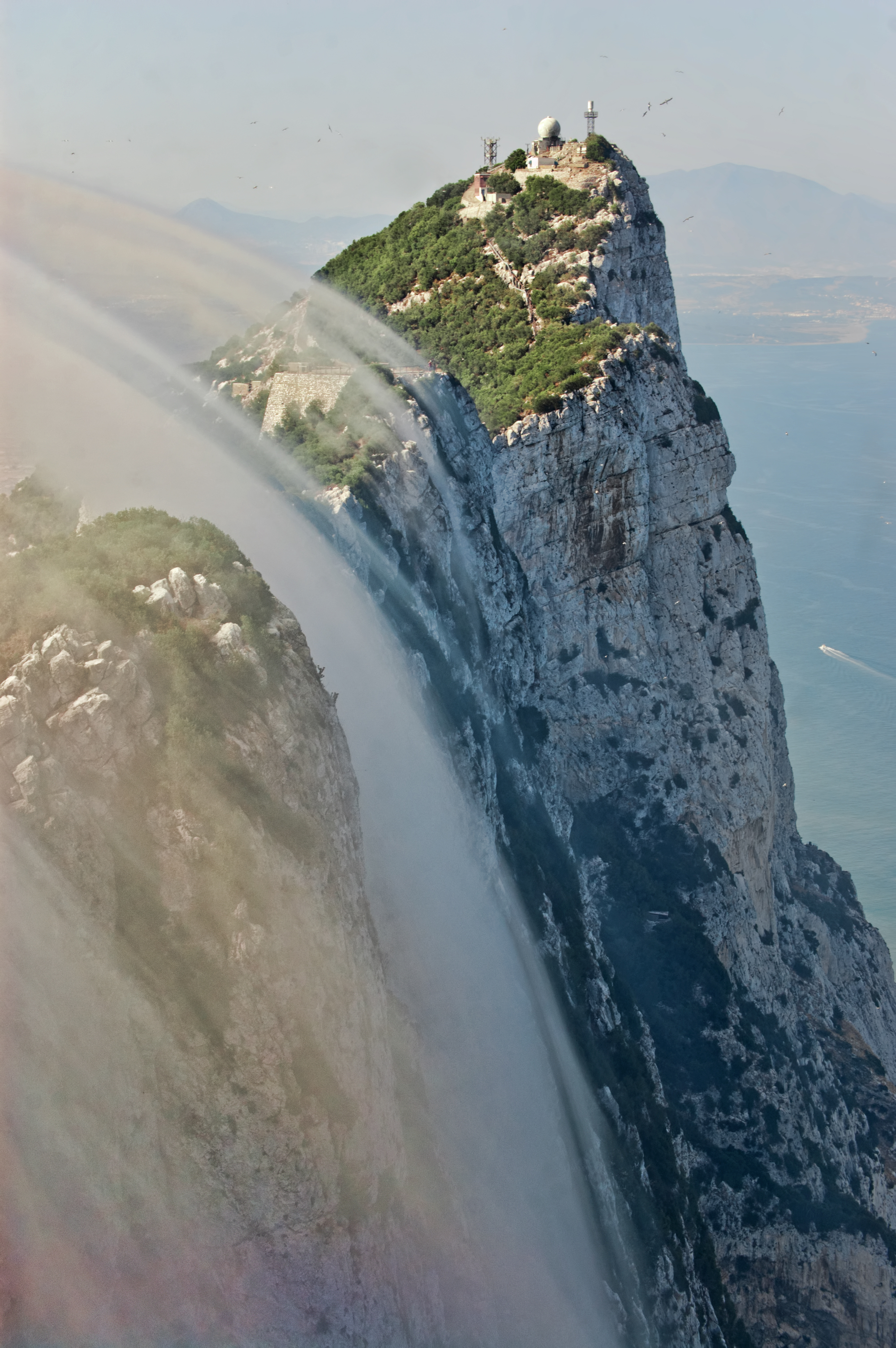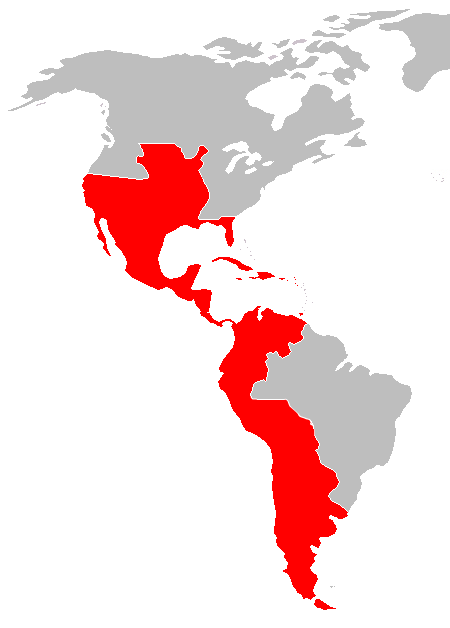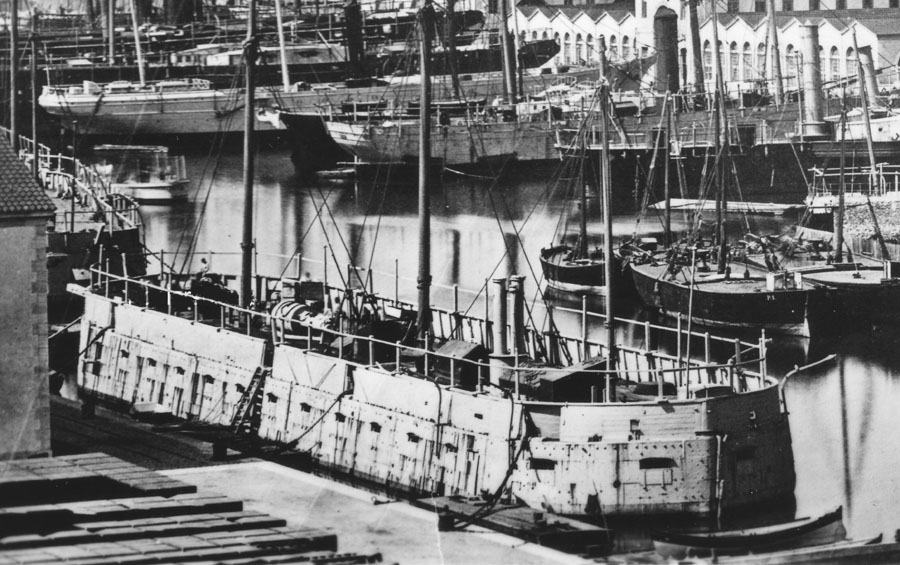|
Great Siege Of Gibraltar
The Great Siege of Gibraltar was an unsuccessful attempt by Spain and France to capture Gibraltar from the British during the War of the American Revolution. It was the largest battle in the war by number of combatants. The American war had ended with the British defeat at Yorktown in October 1781, but the Bourbon defeat in their great final assault on Gibraltar would not come until September 1782. The siege was suspended in February 1783 at the beginning of peace talks with the British. On 16 June 1779, Spain entered the war on the side of France and as co-belligerents of the revolutionary United Colonies—the British base at Gibraltar was Spain's primary war aim. The vulnerable Gibraltar garrison under George Augustus Eliott was blockaded from June 1779 to February 1783, initially by the Spanish alone, led by Martín Álvarez de Sotomayor. The blockade proved to be a failure because two relief convoys entered unmolested—the first under Admiral George Rodney in 1780 and ... [...More Info...] [...Related Items...] OR: [Wikipedia] [Google] [Baidu] |
American Revolutionary War
The American Revolutionary War (April 19, 1775 – September 3, 1783), also known as the Revolutionary War or American War of Independence, was a major war of the American Revolution. Widely considered as the war that secured the independence of the United States, fighting began on April 19, 1775, followed by the Lee Resolution on July 2, 1776, and the Declaration of Independence on July 4, 1776. The American Patriots were supported by the Kingdom of France and, to a lesser extent, the Dutch Republic and the Spanish Empire, in a conflict taking place in North America, the Caribbean, and the Atlantic Ocean. Established by royal charter in the 17th and 18th centuries, the American colonies were largely autonomous in domestic affairs and commercially prosperous, trading with Britain and its Caribbean colonies, as well as other European powers via their Caribbean entrepôts. After British victory over the French in the Seven Years' War in 1763, tensions between the motherlan ... [...More Info...] [...Related Items...] OR: [Wikipedia] [Google] [Baidu] |
American Revolution
The American Revolution was an ideological and political revolution that occurred in British America between 1765 and 1791. The Americans in the Thirteen Colonies formed independent states that defeated the British in the American Revolutionary War (1775–1783), gaining independence from the The Crown, British Crown and establishing the United States of America as the first nation-state founded on Age of Enlightenment, Enlightenment principles of liberal democracy. Colonial history of the United States, American colonists objected to being taxed by the Parliament of Great Britain, a body in which they had no taxation without representation, no direct representation. Before the 1760s, Britain's American colonies had enjoyed a high level of autonomy in their internal affairs, which were locally governed by colonial legislatures. During the 1760s, however, the British Parliament passed a number of acts that were intended to bring the American colonies under more direct rule f ... [...More Info...] [...Related Items...] OR: [Wikipedia] [Google] [Baidu] |
Rock Of Gibraltar
The Rock of Gibraltar (from the Arabic name Jabel-al-Tariq) is a monolithic limestone promontory located in the British territory of Gibraltar, near the southwestern tip of Europe on the Iberian Peninsula, and near the entrance to the Mediterranean. It is high. Most of the Rock's upper area is covered by a nature reserve, which is home to around 300 Barbary macaques. These macaques, as well as a labyrinthine network of tunnels, attract many tourists each year. The Rock of Gibraltar, one of the two traditional Pillars of Hercules, was known to the Romans as ''Mons Calpe'', the other pillar being ''Mons Abila'', either Monte Hacho or Jebel Musa on the African side of the Strait. According to ancient myths fostered by the Greeks and the Phoenicians, and later perpetuated by the Romans, the two points marked the limit to the known world, although the Phoenicians had actually sailed beyond this point into the Atlantic, both northward and southward. The Mediterranean Sea su ... [...More Info...] [...Related Items...] OR: [Wikipedia] [Google] [Baidu] |
British Armed Forces
The British Armed Forces, also known as His Majesty's Armed Forces, are the military forces responsible for the defence of the United Kingdom, its Overseas Territories and the Crown Dependencies. They also promote the UK's wider interests, support international peacekeeping efforts and provide humanitarian aid. Since the formation of the Kingdom of Great Britain in 1707 (later succeeded by the United Kingdom), the British Armed Forces have seen action in a number of major wars involving the world's great powers, including the Seven Years' War, the American Revolutionary War, the Napoleonic Wars, the 1853–1856 Crimean War, the First World War, and the Second World War. Britain's victories in most of these decisive wars, allowed it to influence world events and establish itself as one of the world's leading military and economic powers. As of October 2022, the British Armed Forces consist of: the Royal Navy, a blue-water navy with a fleet of 72 commissioned ships, together ... [...More Info...] [...Related Items...] OR: [Wikipedia] [Google] [Baidu] |
Siege
A siege is a military blockade of a city, or fortress, with the intent of conquering by attrition, or a well-prepared assault. This derives from la, sedere, lit=to sit. Siege warfare is a form of constant, low-intensity conflict characterized by one party holding a strong, static, defensive position. Consequently, an opportunity for negotiation between combatants is common, as proximity and fluctuating advantage can encourage diplomacy. The art of conducting and resisting sieges is called siege warfare, siegecraft, or poliorcetics. A siege occurs when an attacker encounters a city or fortress that cannot be easily taken by a quick assault, and which refuses to surrender. Sieges involve surrounding the target to block the provision of supplies and the reinforcement or escape of troops (a tactic known as " investment"). This is typically coupled with attempts to reduce the fortifications by means of siege engines, artillery bombardment, mining (also known as sapping), or th ... [...More Info...] [...Related Items...] OR: [Wikipedia] [Google] [Baidu] |
Peace Of Paris (1783)
The Peace of Paris of 1783 was the set of treaties that ended the American Revolutionary War. On 3 September 1783, representatives of King George III of Great Britain signed a treaty in Paris with representatives of the United States of America—commonly known as the Treaty of Paris (1783)—and two treaties at Versailles with representatives of King Louis XVI of France and King Charles III of Spain—commonly known as the Treaties of Versailles (1783). The previous day, a preliminary treaty had been signed with representatives of the States General of the Dutch Republic, but the final treaty which ended the Fourth Anglo-Dutch War was not signed until 20 May 1784; for convenience, however, it is included in the summaries below. The treaty dictated that the British would lose their Thirteen Colonies and marked the end of the First British Empire. The United States gained more than it expected, thanks to the award of western territory. The other Allies had mixed to poor results ... [...More Info...] [...Related Items...] OR: [Wikipedia] [Google] [Baidu] |
Richard Howe, 1st Earl Howe
Admiral of the Fleet Richard Howe, 1st Earl Howe, (8 March 1726 – 5 August 1799) was a British naval officer. After serving throughout the War of the Austrian Succession, he gained a reputation for his role in amphibious operations against the French coast as part of Britain's policy of naval descents during the Seven Years' War. He also took part, as a naval captain, in the decisive British naval victory at the Battle of Quiberon Bay in November 1759. In North America, Howe is best known for his service during the American Revolutionary War, when he acted as a naval commander and a peace commissioner with the American rebels; he also conducted a successful relief during the Great Siege of Gibraltar in the later stages of the War. Howe later commanded the victorious British fleet during the Glorious First of June in June 1794 during the French Revolutionary Wars. Early career Howe was born in Albemarle Street, London, the second son of Emanuel Howe, 2nd Viscount Ho ... [...More Info...] [...Related Items...] OR: [Wikipedia] [Google] [Baidu] |
Floating Battery
A floating battery is a kind of armed watercraft, often improvised or experimental, which carries heavy armament but has few other qualities as a warship. History Use of timber rafts loaded with cannon by Danish defenders of Copenhagen against bomb ketches of a combined British-Dutch-Swedish fleet is attested by Nathaniel Uring in 1700. An early appearance was in 1782 at the Great Siege of Gibraltar, and its invention and usage is attributed to Spanish Lieutenant General Antonio Barceló. A purpose-built floating battery was ''Flådebatteri No. 1'', designed by Chief Engineer Henrik Gerner in 1787; it was long, wide and armed with 24 guns, and was used during the 1801 Battle of Copenhagen under the command of Peter Willemoes. The British made limited use of floating batteries during the French Revolutionary and Napoleonic Wars, with the two-vessel and -class floating batteries, and some individual vessels such as . The most notable floating batteries were built o ... [...More Info...] [...Related Items...] OR: [Wikipedia] [Google] [Baidu] |
French Army
The French Army, officially known as the Land Army (french: Armée de Terre, ), is the land-based and largest component of the French Armed Forces. It is responsible to the Government of France, along with the other components of the Armed Forces. The current Chief of Staff of the French Army (CEMAT) is General , a direct subordinate of the Chief of the Defence Staff (CEMA). General Schill is also responsible to the Ministry of the Armed Forces for organization, preparation, use of forces, as well as planning and programming, equipment and Army future acquisitions. For active service, Army units are placed under the authority of the Chief of the Defence Staff (CEMA), who is responsible to the President of France for planning for, and use of forces. All French soldiers are considered professionals, following the suspension of French military conscription, voted in parliament in 1997 and made effective in 2001. , the French Army employed 118,600 personnel (including the Foreig ... [...More Info...] [...Related Items...] OR: [Wikipedia] [Google] [Baidu] |
Sortie
A sortie (from the French word meaning ''exit'' or from Latin root ''surgere'' meaning to "rise up") is a deployment or dispatch of one military unit, be it an aircraft An aircraft is a vehicle that is able to flight, fly by gaining support from the Atmosphere of Earth, air. It counters the force of gravity by using either Buoyancy, static lift or by using the Lift (force), dynamic lift of an airfoil, or in ..., ship, or troops, from a strongpoint. The term originated in siege warfare. In aviation In military aviation, a sortie is a combat mission of an individual aircraft, starting when the aircraft takes off. For example, one mission involving six aircraft would tally six sorties. The sortie rate is the number of sorties that a given unit can support in a given time. In siege warfare In siege warfare, the word ''sortie'' refers specifically to a sudden issuing of troops against the enemy from a defensive position—that is, an attack launched against the besieger ... [...More Info...] [...Related Items...] OR: [Wikipedia] [Google] [Baidu] |
Spanish Navy
The Spanish Navy or officially, the Armada, is the maritime branch of the Spanish Armed Forces and one of the oldest active naval forces in the world. The Spanish Navy was responsible for a number of major historic achievements in navigation, the most famous being the discovery of America and the first global circumnavigation by Elcano. For several centuries, it played a crucial logistical role in the expansion and consolidation of the Spanish Empire, and defended a vast trade network across the Atlantic Ocean between the Americas and Europe, and the Manila Galleon across the Pacific Ocean between the Philippines and the Americas. The Spanish Navy was the most powerful maritime force in the world from the late 15th century to the early 18th century. In the early 19th century, with the loss of most of its empire, Spain transitioned to a smaller fleet but maintained a major shipbuilding industry which produced important technical innovations. The Spanish Navy built and operat ... [...More Info...] [...Related Items...] OR: [Wikipedia] [Google] [Baidu] |
George Darby
Vice Admiral George Darby (c.1720 – 1790) was a Royal Navy officer. He commanded HMS ''Norwich'' at the capture of Martinique in 1762 during the Seven Years' War. He went on to command the Channel Fleet during the American Revolutionary War and later in that war served as First Naval Lord when he commanded the force that relieved Gibraltar from its siege by the Spanish in April 1781. Naval career Early career Darby was the second son of Jonathan Darby (III) (d.1742/3) and Anna Marie Frend both of Leap Castle, in King's County, Ireland. He joined the Royal Navy as a volunteer in September 1742. Promoted to post-captain on 12 September 1747, he received his first command, the sixth-rate HMS ''Aldborough''. He went on to become commanding officer of the sixth-rate HMS ''Seahorse'' in 1756 and of the fourth-rate HMS ''Norwich'' in 1757 in which he served under Admiral Rodney at the capture of Martinique in 1762 during the Seven Years' War. After that he became commandi ... [...More Info...] [...Related Items...] OR: [Wikipedia] [Google] [Baidu] |







